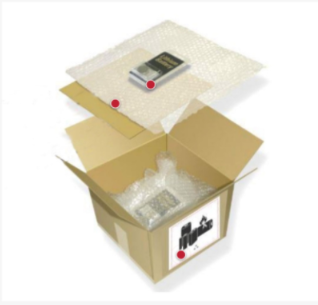Consider this: Which approach to shipping would you prefer used to ship your new mobile phone?
There are specific requirements for safely packaging and shipping lithium-ion batteries.
Packaging and shipping batteries includes very specific demands for safe transport. The following criteria must be met:
- Batteries must be no more than 30% State of Charge
- Packages must be secured to protect batteries from shifting, short-circuiting, activating, and being damaged by other package contents
- Packages that contain lithium-ion batteries must be clearly marked
- Lithium-ion batteries outside of a device must be in a container that weighs less than 30 kg (66.14 lbs) and passes a 1.2 meter (3.94 ft) drop test
- Once they meet these criteria, the phones are ready to ship!

Most mobile phones are shipped by air.
Because lithium-ion batteries can short-circuit and cause thermal runaway, they are considered dangerous goods on cargo and passenger planes by the International Civil Aviation Organization (ICAO) and tightly regulated by the UN and the International Air Transport Association (IATA).

